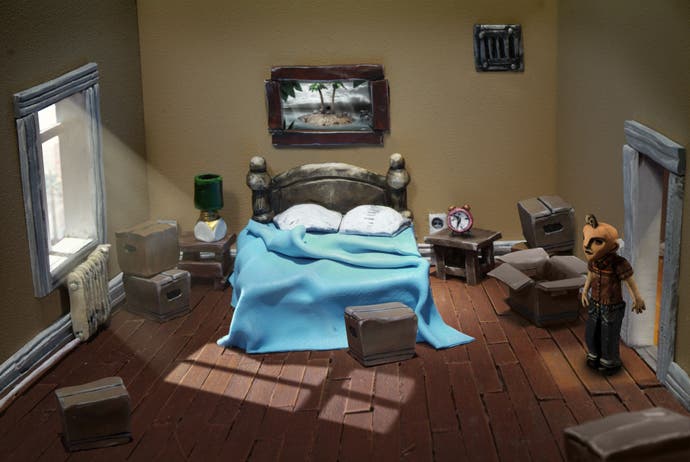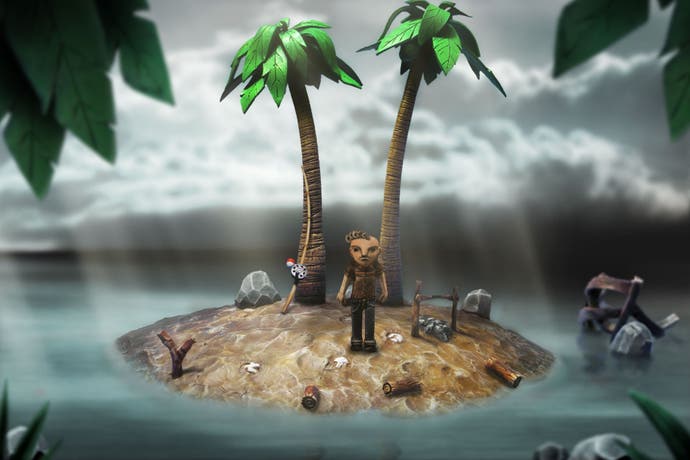The Dream Machine
"This industry really enjoys beating things to a pulp."
Building something physically requires a lot more pre-planning than building something digitally. If we need do a major change on one of the sets, it basically means we have to build, paint, light, shoot and Photoshop the whole thing again. With that much overhead, you can't make creative decisions on a whim, which keeps you focused and on your toes.
Since this was a new way for us to work, it took a while to establish the production pipeline, if you can call it that. In the beginning, for instance, I was very reluctant to supply the builders with detailed blueprints of the rooms I needed, thinking that it would limit them creatively. But once I tried building a room myself without a blueprint, I realised that you're basically lost in the woods if you have to come up with what to build as you're building it. It's a recipe for disaster.
A huge plus is that the entire game is an amalgamation of my design filtered through Erik's artistic sensibilities. It gives it a strange, uneasy quality that really serves the story.

The stop-motion studio, Dockhus Animation, is the same one that Erik used to run. They're brilliant guys and still let us borrow equipment and workspace. They helped us out in the beginning of the project when we needed to whip up a proof-of-concept demo to show the Nordic Game grant people that a game built out of clay and cardboard was actually feasible.
As for the characters, they are built out of clay and painted by hand. We then take photographs of the figurine and apply as a texture to a 3D mesh. The animation and lighting is then done in Maya. In the early days, we discussed doing the animation by hand as well, but since the characters have to travel through very varied lighting conditions, stop-motion animation just proved too static and wasn't practical.
Mainly by trying not to draw inspiration from other games. Games in general are too homogenous. They all borrow from each other in a way that's a bit incestuous. Once a game mechanic proves successful in one game, you see it crop up everywhere. This industry really enjoys beating things to a pulp. I guess it's a side effect of the cost associated with a triple-A title.

I think my main beef with other games is that I just get bored with the stories they tell. Even games that are held in high regard story wise are just formulaic and insulting when compared to any other medium. "Alright marines, alien xenomorphs have taken over Tiara! We need to establish a beach head on that ridge - otherwise humanity is done for!" The second I hear dialogue like that, I just tune out.
I love the mechanics of some games, and I love the immediacy of the medium, but the stories are often just used as a flimsy pretext to string the Egyptian level, the offshore oilrig level and the lava level together. I wanted to do something that's a bit more ambitious than that.
When we tried to establish the mood for the game, we looked a lot at Polanski's Apartment trilogy, Polish film poster art and Cronenberg movies. I love the skewed universe in Polanski's The Tenant, in particular. It starts out in a very real, very mundane place, but soon veers over into a darker realm of neighborhood conspiracies, hieroglyphs and self-mutilation.
Strictly speaking, our closest peers would be the three games in the exotic sub-sub genre of hand-built adventure games. Correct me if I'm wrong, but off the top of my head I can only recall The Neverhood, Blackout and The Dark Eye. And they all came out more than twelve years ago. You can't exactly call the market saturated.

